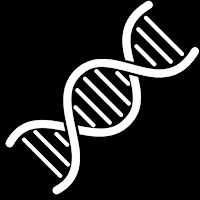Vision loss after stroke is likely more common than you think. According to Stroke.org, up to 66% of all stroke survivors will experience some change to their vision following the event. It is estimated that approximately 20% of stroke sufferers end up with a permanent visual field deficit.
A Research team has discovered a way to restore vision after stroke by using gene therapy to turn glial brain cells into neurons. It can restore visual function and offers hope for a way to restore motor function.
Can a stroke change your vision? If Yes, then how?
A Stroke can cause change in your vision because most strokes happen when an artery in the brain becomes blocked. Blood flow to the neural tissue stops, and those tissues typically die. Because of the locations of the major arteries in the brain, many strokes affect motor function. Some affect vision, however, causing patients to lose their vision or find it compromised or diminished.
New Gene therapy to restore vision after stroke:
A team of researchers led by Purdue University's Alexander Chubykin, an associate professor of biological sciences in the College of Science, in collaboration with the team led by Gong Chen at Jinan University, China, discovered this gene based therapy to restore vision after a stroke.
This new gene therapy, as demonstrated in a mouse model, is more efficient and much more promising. Neurons don't regenerate. The brain can sometimes remap its neural pathways enough to restore some visual function after a stroke, but that process is slow, it's inefficient, and for some patients, it never happens at all. Stem cell therapy, which can help, relies on finding an immune match and is cumbersome and difficult.
Read also: World's First Nerve-Stimulation Device to Aid Stroke Recovery approved by FDA | The Vivistim System
"We are directly reprogramming the local glial cells into neurons," Chubykin said. "We don't have to implant new cells, so there's no immunogenic rejection. This process is easier to do than stem cell therapy, and there's less damage to the brain. We are helping the brain heal itself. We can see the connections between the old neurons and the newly reprogrammed neurons get reestablished. We can watch the mice get their vision back."
Chubykin's research is especially important because visual function is easier than motor skills to measure accurately, using techniques including optical imaging in live mice to track the development and maturation of the newly converted neurons over the course of weeks. Perfecting and understanding this technique could lead to a similar technique reestablishing motor function. This research bridges the gap in understanding between the basic interpretation of the neurons and the function of the organs.
References:
- Information provided by Purdue University. Original written by Brittany Steff.
- Yu Tang, Qiuyu Wu, Mang Gao, Esther Ryu, Zifei Pei, Samuel T. Kissinger, Yuchen Chen, Abhinav K. Rao, Zongqin Xiang, Tao Wang, Wen Li, Gong Chen, Alexander A. Chubykin. Restoration of Visual Function and Cortical Connectivity After Ischemic Injury Through NeuroD1-Mediated Gene Therapy. Frontiers in Cell and Developmental Biology, 2021; 9 DOI: 10.3389/fcell.2021.720078




